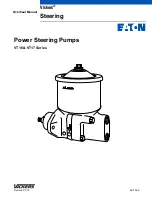
7 Installation
Installer reference guide
30
ERLQ004~0 EHVH/X04+0 EHVH/X08S26CA
Daikin Altherma - Low Temperature Split
4P313775-1C – 2012.11
Unit
Installation period
Protection method
Outdoor unit
>1 month
Pinch the pipe
<1 month
Pinch or tape the pipe
Indoor unit
Regardless of the
period
INFORMATION
Do NOT open the refrigerant stop valve before checking
the refrigerant piping. When you need to charge additional
refrigerant it is recommended to open the refrigerant stop
valve after charging.
Take the following guidelines into account when connecting pipes:
▪ Coat the flare inner surface with ether oil or ester oil when
connecting a flare nut. Tighten 3 or 4 turns by hand, before
tightening firmly.
▪ Always use two wrenches together when loosening a flare nut.
▪ Always use a spanner and torque wrench together to tighten the
flare nut when connecting the piping. This to prevent nut cracking
and leaks.
a
b
c
d
a
Torque wrench
b
Spanner
c
Piping union
d
Flare nut
Piping size
(mm)
Tightening
torque (N•m)
Flare
dimensions
(mm)
Flare shape
(mm)
Ø6.4
15~17
8.7~9.1
R=0.4~0.8
45
° ±2
90°±2
A
Ø15.9
63~75
19.3~19.7
7.4.1
Pipe bending guidelines
Use a pipe bender for bending. All pipe bends should be as gentle
as possible (bending radius should be 30~40 mm or larger).
7.4.2
To flare the pipe end
CAUTION
▪ Incomplete flaring may cause refrigerant gas leakage.
▪ Do NOT re-use flares. Use new flares to prevent for
refrigerant gas leakage.
▪ Use flare nuts that are included with the unit. Using
different flare nuts may cause to refrigerant gas
leakage.
1
Cut the pipe end with a pipe cutter.
2
Remove burrs with the cut surface lacing downward so that the
chips does not enter the pipe.
a
b
a
Cut exactly at right angles.
b
Remove burrs.
3
Remove the flare nut from the stop valve and put the flare nut
on the pipe.
4
Flare the pipe. Set exactly at the position as shown in the
following illustration.
A
Conventional flare tool
Flare tool for
R410A (clutch
type)
Clutch type
(Ridgid-type)
Wing nut type
(Imperial-type)
A
0~0.5 mm
1.0~1.5 mm
1.5~2.0 mm
5
Check that the flaring is properly made.
a
b
c
a
Flare’s inner surface must be flawless.
b
The pipe end must be evenly flared in a perfect
circle.
c
Make sure the flare nut is lifted.
7.4.3
To braze the pipe end
The indoor unit and outdoor unit have flare connections. Connect
both ends without brazing. If brazing should be needed, take the
following into account:
▪ When brazing, blow through with nitrogen to prevent creation of
large quantities of oxidized film on the inside of the piping. This
film adversely affects valves and compressors in the refrigerating
system and prevents proper operation.
▪ Set the nitrogen pressure to 20 kPa (just enough so it can be felt
on the skin) with a pressure-reducing valve.
a
b
c
d
e
f
f
a
Refrigerant piping
b
Part to be brazed
c
Taping
d
Manual valve
e
Pressure-reducing valve
f
Nitrogen
▪ Do NOT use anti-oxidants when brazing pipe joints.
▪ Do NOT use flux when brazing copper-to-copper refrigerant
piping. Use phosphor copper brazing filler alloy (BCuP), which
does not require flux.
7.4.4
To handle the stop valve
Take the following guidelines into account:
▪ The stop valves are factory closed.
▪ The following illustration shows each part required in handling the
valve.
c
d
a
b
a
Service port and service port cap
Содержание ERLQ004~008CAV3
Страница 111: ......
Страница 112: ...4P313775 1C 2012 11 Copyright 2012 Daikin...
















































